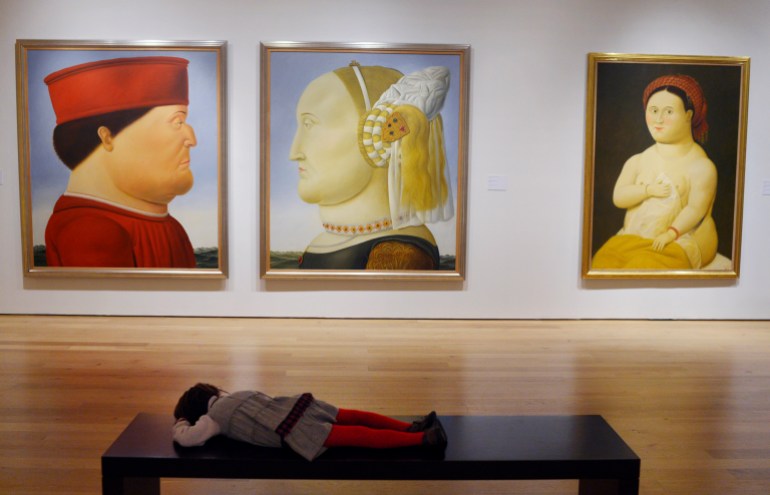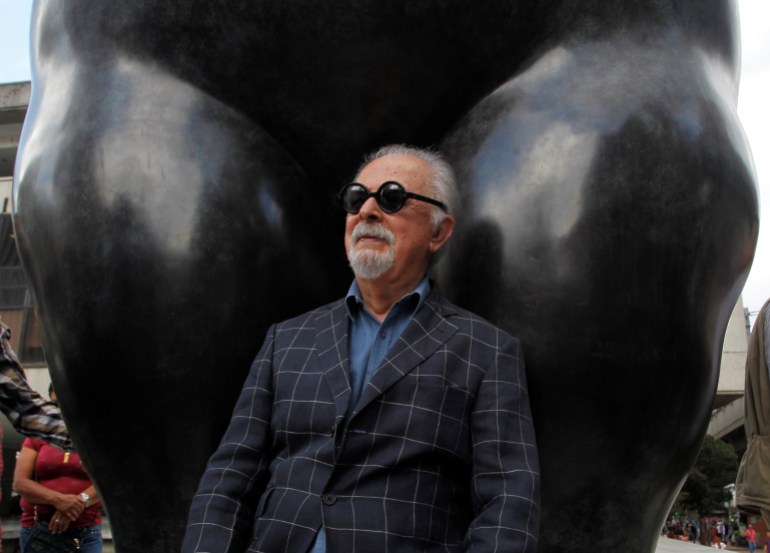“Fernando Botero, the painter of our traditions and defects, the painter of our virtues, has died,” the Colombian president posted on social media on Friday, without providing details on the cause of death.
His daughter, Lina Botero, told Colombian radio station Caracol that her father died in Monaco on Friday morning of pneumonia complications.
Botero’s works of plump and slightly Surreal forms became enormously popular during his lifetime, on display in museums and public spaces in cities around the world, including Bogota, Madrid, Paris, Singapore and Venice.
Heralded as South America’s answer to Picasso and unanimously remembered in Colombian media outlets on Friday as “the greatest Colombian artist of all time”, Botero also tackled violence and political topics, including Colombia’s internal conflicts, as well as portraying daily life.
Born in Medellin in 1932, his signature style was known as “Boterismo” and he is considered one of the greatest artists of the 20th century.
Although widely known for his large subjects, Botero insisted his pieces were not focused on body type. “I don’t paint fat women,” he told Spain’s El Mundo newspaper in 2014. “No one believes me, but it’s true.
“I am interested in volume, the sensuality of the form. If I paint a woman, a man, a dog or a horse, I do it with volume.”

Although he lived most of his life in Europe and the United States, his work was populated by plump bullfighters, sex workers, and other characters that evoked his native Medellin.
“I painted Colombia all my life,” he once said. “The kind aspects that I knew in childhood and adolescence.”
In an interview with the AFP news agency to mark his 80th birthday in 2012, Botero said he often thought of death. “It makes me sad to leave this world and to not be able to work any more because I take a lot of joy in my work,” he said at that time.
Botero’s work sometimes focused on Colombia’s long-running internal conflict – he painted the aftermath of a car bomb and a group of partygoers menaced by men wielding automatic weapons and bloody machetes.
He also created tongue-in-cheek portraits of public figures, including Revolutionary Armed Forces of Colombia (FARC) rebel group founder Manuel Marulanda.
Botero also paid tribute to classic paintings with witty rehashings – his version of the Mona Lisa is notably bloated compared with Da Vinci’s original.
But it was his series of paintings about the Abu Ghraib prison scandal that generated discussion across the art world and commanded global attention.

The paintings, based on victim accounts and photos taken of the abuse of Iraqi prisoners by US soldiers, are explicit and harrowing.
The series was exhibited around the world, drawing tens of thousands of viewers. The New York Times said the paintings, while not masterpieces, “restore the prisoners’ dignity and humanity without diminishing their agony”.
Botero’s final decades as one of the world’s wealthiest artists were a far cry from his humble beginnings. Fernando Botero Angulo, the son of a travelling salesman and a seamstress, was born on April 19, 1932, in Medellin.
As an artist, Botero sought to make his work accessible, donating more than 200 works to create the Botero Museum in Bogota, which is free and receives half a million visitors a year.
More than 100 of the pieces were his own, while others were by masters including Picasso, Dali and Monet. He gave another 150 works to a Medellin museum and 23 of his sculptures are installed outside in the Plaza Botero.
Botero is survived by his wife Sophia Vari, his daughter and two sons. Another son, aged four, was killed in a car crash in 1974.
